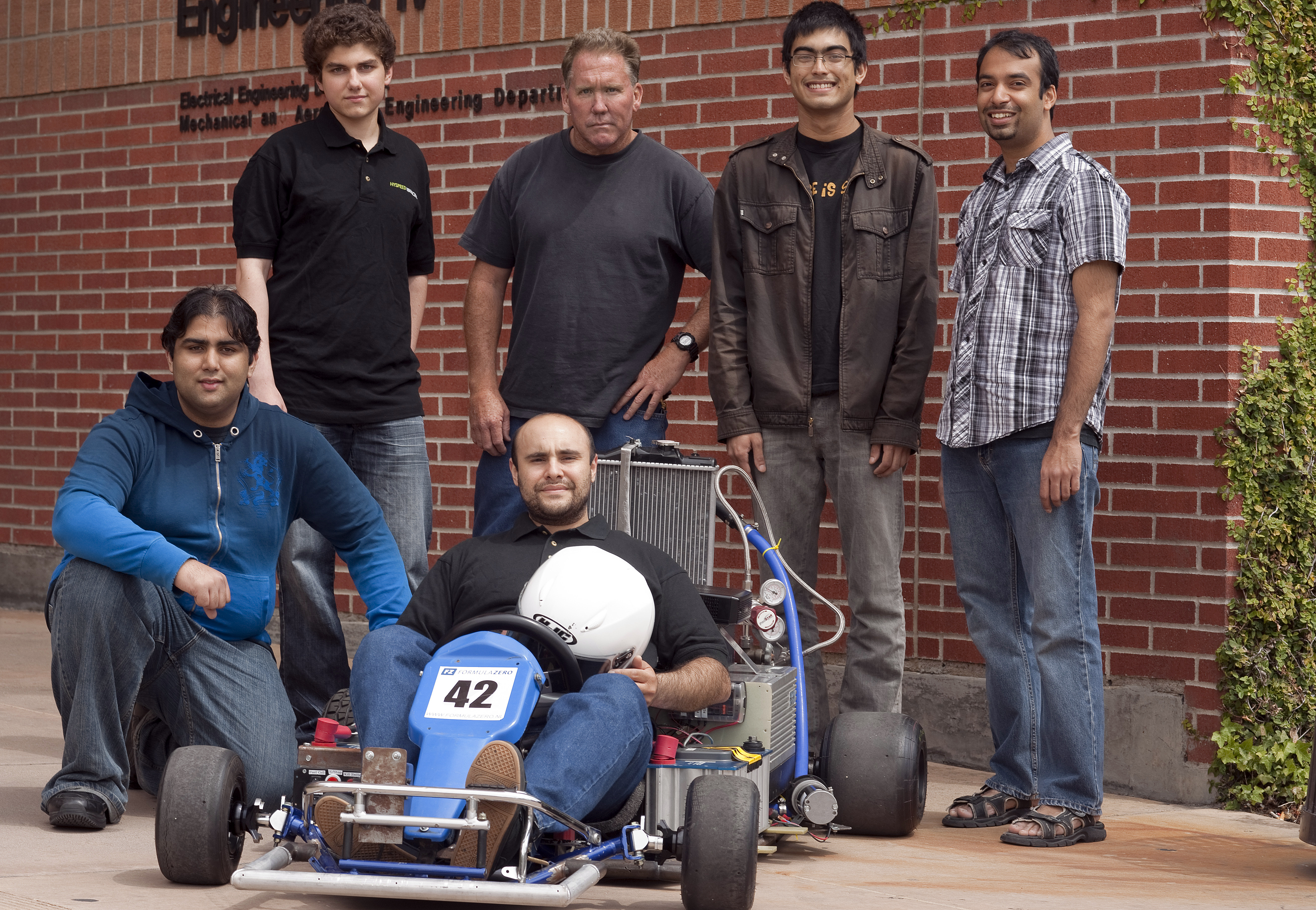
More efficient than normal gasoline, biofuels are hoped by UCLA researchers to be the future of energy. The creation of biofuels is illustrated above.
The taste of the exhaust from a hydrogen fuel cell vehicle is familiar, like water from a hose.
The advantages of a fuel cell vehicle are even clearer than the taste of its exhaust. Unlike the harmful pollutants that gasoline vehicles produce, the only emission that hydrogen fuel cell vehicles produce is water, said Fernando Olmos, a graduate student in chemical engineering.
Over the past four years, students of HercUCLAs ““ a wordplay on Hercules that stands for UCLA’s Hydrogen Engineering Research Consortium ““ have researched the efficiencies that hydrogen provides with the belief that this will be the next renewable transportation fuel.
HercUCLAs has based its research on a hydrogen fuel cell go-kart it built to compete in a 2008 European-based competition of fuel cell go-karts.
The group, which features the talents of multidisciplinary undergraduate and graduate students, is in the process of designing a second kart.
Still only a skeletal image, this kart will have four-wheel drive, be lighter in weight and drive faster overall.
The group hopes to build a database of knowledge it has obtained from the kart, whose electrical and mechanical components and processes they have studied intensely, Olmos said.
Through continuous improvement and research, UCLA could potentially have a fully functioning undergraduate and graduate laboratory for both the go-kart and hydrogen production in the future, said Vasilios Manousiouthakis, professor of chemical and biomolecular engineering and a HercUCLAs faculty adviser.
“There aren’t many universities in the U.S. that are reaching this close to actual technology of fuel cell cars,” Manousiouthakis said. “In retrospect, we’re providing a rather unique experience in a U.S. basis.”
Southern California will be the test bed for the deployment of thousands of fuel cell vehicles within the next 40 years as automobile companies release them and more fueling stations are built, Manousiouthakis said.
The group wants to organize a race to compare hydrogen fuel cell go-karts to electric go-karts, which take time to be charged, said Sean Rosenfeld, a fourth-year chemical engineering student.
But competition events of this kind for fuel cell vehicles are limited because of insurance requirements and organizational efforts, Manousiouthakis said.
Europeans receive more funding for fuel cell vehicle research.
Hydrogen fuel cells are also more expensive than traditional engines because they utilize costly platinum as a noble catalyst to transform hydrogen into electricity. The volume of fuel cell vehicles also does not exist yet for large production, Manousiouthakis said.
Instead of gasoline, these vehicles use hydrogen gas from a compressed gas cylinder. The hydrogen gas is nearly 30 percent more efficient than gasoline. As more money is put into research, this efficiency gap may increase, Olmos said.
The acceleration in hydrogen fuel cell vehicles is also quick and immediate, Rosenfeld said.
With an electric motor in a hydrogen fuel cell vehicle, a driver can sense when the car is slipping. The motor provides a more intelligent control system that prevents a driver from losing control, said Jay Panchal, a graduate student in mechanical engineering.
Legal contracts for the funding of a UCLA hydrogen fueling station are in the works, with the anticipation that the station will begin construction sometime within the next year, Manousiouthakis said. This station would fill compressed gas tanks to 700 atmospheres, a pressure which provides enough hydrogen gas to power a car for 160 miles.
The students are optimistic that hydrogen fuel cells will be the future of mobility.
“I think hydrogen is going to be our future,” Olmos said. “After working in this for four years, I believe it not because I like it or because I work on it, but if you look at the numbers and the math, it just entirely beats gasoline and any other fuel you can find.”
By working on all facets of the problem, Manousiouthakis said the research could be the complete solution for the future.
“We’re essentially trying to change the transportation paradigm from gasoline to hydrogen,” he said.
